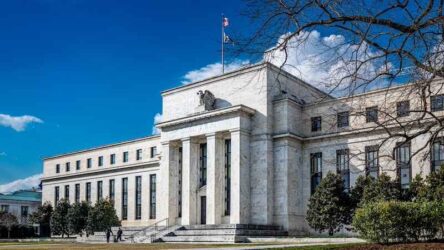The Biggest Winner of the Fed’s Coming Rate Cut
Robert Ross|September 3, 2024

The stock market permabears have already lost their shine.
By permabears, I mean the market commentators who seemingly always have something negative to say. These were people giddy at the sight of investor panic during the yen carry trade last month.
They are pessimists by nature, hand selecting any and every scary economic data point they can find to make you as scared as they are.
But here’s the thing…
It does not pay to be a market pessimist. Over the last 100 years, the S&P 500 has finished in positive territory 75% of the time. Crashes do happen but are extremely rare, with drop of 50% in the S&P 500 happening only three times in the last century.
And there are plenty of reasons to be optimistic right now.
- The Dow Jones Industrial Average hit an all-time high.
- The S&P 500 is within reach of all-time highs.
- Utilities, financials, healthcare, industrial, and real estate sectors are at all-time highs.
- S&P 493 earnings growth is accelerating.
- Zero S&P 500 stocks are at 52-week lows.
I could go on, but you get the point. Now is the time for optimism, not pessimism… much to the chagrin of your neighborhood permabear.
And that’s especially true now that the Federal Reserve will begin cutting interest rates.
The Trajectory for Rates Is Clear
Jerome Powell didn’t mince words at Jackson Hole two weeks ago.
Despite every permabear I keep an eye on exclaiming Powell would “shock the market” with his hawkishness, he was anything but. In fact, Powell clearly laid out his outlook for interest rates…

I know a permabear will read that and say, “stocks always crash after the Fed cuts rates!” But anyone saying that is either uninformed or being internationally obtuse.
Historically, stocks tend to perform poorly after rate cuts because the Fed is cutting in response to a crisis like the collapse of Lehman Brothers, COVID-19, or 9/11. It’s like blaming the medicine for not working fast enough when a patient has a fever.
The hard truth is that rate cuts in absence of a broader economic crisis are good for risk assets. This is what happened in 2019 and 1995 when the Fed loosened policy without an economic crisis.
And as liquidity increases and borrowing costs decrease, it creates a more favorable environment for stocks, particularly small cap stocks.
Small Cap Stocks Are About to Soar
Small caps have historically outperformed during periods of monetary easing.
The asset class benefits disproportionately from lower interest rates and increased economic activity. During the 2019 rate cut cycle, small cap stocks surged as investors flocked to more growth-sensitive sectors. We saw this again in 2003 – following the early 2000s recession – when small caps outpaced large caps as the Federal Reserve lowered interest rates to stimulate economic growth.
In fact, during periods of easing, small cap stocks tend to outperform large caps by a significant margin. According to data from Russell Investments, small caps outperformed large caps by an average of 2% during easing cycles. This pattern held true during the early 2000s, the post-financial crisis recovery, and the 2019 rate cuts.

Investors often view small caps as more nimble and responsive to economic shifts, making them an attractive play in an environment where liquidity is on the rise. As we potentially head into another rate cut cycle, small cap stocks are once again positioned to lead the charge.
The Global Easing Cycle Is Beginning
With the Fed set to embark on another rate cut cycle, small caps are primed to be the biggest winners, especially as the broader economic outlook improves and investor sentiment shifts toward riskier, higher-growth opportunities.
The market is already pricing in nearly 200 basis points in cuts over the next year…

And considering that we’re entering a global easing cycle, small caps will be a major beneficiary of the surge in market liquidity…

This could be the perfect storm for small caps to outshine other segments of the market, making them a key focus for investors looking to capitalize on the coming rate cuts.
This is a key reason we’ve been adding small cap exposure to my premium Breakout Fortunes service. I manage a high-risk, high-reward portfolio of small cap stocks, crypto, and options, the latter of which has been on a great run. In fact, my latest options trade is already up 39% in less than a month.
But either way, investors should keep small caps on their radar. Even if you only buy a small cap ETF like the Vanguard Small-Cap Index Fund ETF (VB), it’s a great time to add exposure to this unloved stock sector… despite the permabears saying the end is nigh for the 500th time.



